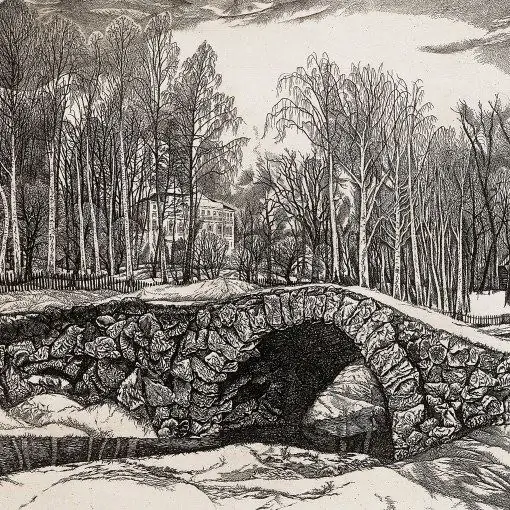Etching is the process of producing metal printing plates by acid etching. Paint is applied to such forms and the etched pattern is printed on paper - this is how an engraving is obtained.

Instructions
Step 1
Etching literally translated from French means "strong water". This is how nitric acid was called in the Middle Ages. Etching is a type of engraving, for which metal printing plates are obtained by etching with strong acids.
Step 2
The process of obtaining such engravings is as follows. The metal surface (usually copper, zinc or steel) is coated with a layer of wax or varnish that is resistant to the action of acids. Then the artist applies the image with a needle, removing unnecessary varnish. The metal sheet is then immersed in an acid bath, which begins to corrode the varnish-free surface. The resulting form is taken out of the bath, washed and then the varnish layer is cleaned off from it.
Step 3
Such engravings are printed using a press. Before printing, paint is applied to the acid-etched form, which accumulates in depressions on the metal surface. Then a sheet of paper is placed on the mold and placed in a press. In this way, many paper copies can be made with one metal mold. Typically, the form becomes unusable only after printing several hundred paper impressions.
Step 4
It was invented to apply patterns on the surface of metal using acid etching back in the Middle Ages. In this way, guns, armor, edged weapons were decorated. Daniel Hopfer was the first to make metal molds for printing engravings with acids at the beginning of the 16th century. At first, iron molds were used for etching. Later, Italian craftsmen began to use copper plates.
Step 5
In the early 17th century, Frenchman Jacques Callot invented a special nail polish remover needle. It had an oval cross-section and made it possible to create truly masterpiece engravings. Callot also developed a multi-stage acid treatment method. If the artist needed to create only a light, barely noticeable tone on a metal form, part of the drawing was quickly treated with acid, and then varnished again to save the drawing from further etching.
Step 6
Modern etching masters use asphalt, bitumen and other substances instead of varnish. Vapors of strong acids, as well as solvents, with the help of which the protective layer was previously removed, are toxic. Therefore, safer etching techniques have now been developed. Some artists prefer to create a protective layer based on acrylic polymers, and the etching process is carried out using ferric chloride. At the end of etching, the polymer is washed off with a solution of ordinary soda.

